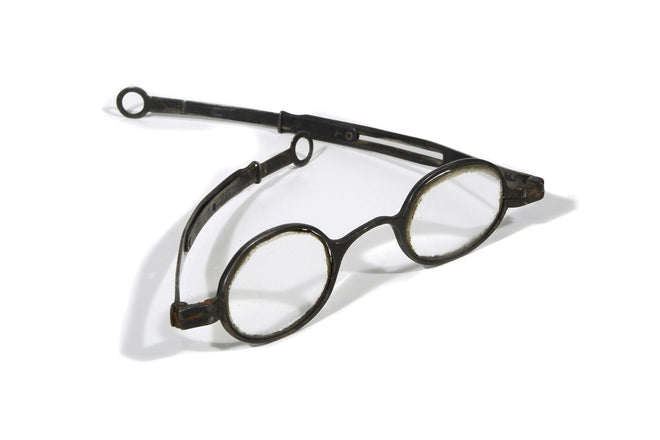In today’s world, eyeglasses for visual aid are one of the most common commodities in many countries and cultures. Their accessibility and affordability make it easy to take eyeglasses for granted when really, they’re one of the most valuable inventions in human history. However, the history of glasses is complex with many variations of where and when they were created.
A few hundred years ago, the human race had to struggle with not being able to see well, and it hindered social progress. Eyewear took a long time to evolve into what it is today—from a rare possession only for the rich, to a vision correction fashion accessory available to everyone.
Who invented eyeglasses in the Renaissance?
Eyeglasses were said to have been created by Salvino D’Armati in Italy during the 13th century.
It all started with the invention of two convex lenses placed in a wooden setting, with a shaft held together with a rivet. The wearer held it to his face to improve his vision. However, this is only one of many accounts when it comes to the origin of glasses.
So who actually created glasses? Well, it simply depends on who you ask.
When Were Glasses Invented
While most experts claim the 13th century, several dates have been thrown around when it comes to when glasses were invented. However, It wasn’t until the 18th century that the eyeglasses we recognize today started to take shape.
Until then, early glasses were not fitted to the face, and the wearer had to hold them in place to use them. But around this time, a nose bridge and temples were added to keep the eyeglasses in place so they wouldn’t fall off the face.
Advancements continued from there and included better materials, better-designed temples, and more comfortable nose pads.
History of Bifocal Lenses
Benjamin Franklin is credited for inventing bifocals in 1784. He created them because he was tired of switching eyeglasses for far and near. So, he combined the two lenses by cutting them and then combining the segments into one glass with a sharp switch between the upper and lower lenses.
In the 19th century, Louis de Wecker, a French Ophthalmologist, helped to improve the original model by fusing the upper and lower sections. And Peter Williams, who is credited with the invention of trifocal lenses, is credited with coining the term “bifocals,” although he credited Benjamin Franklin for the invention.
Today, modern bifocals haven’t changed in design since Benjamin Franklin’s time. Better materials, manufacturing methods, and better lens technology have evolved to make the bifocal lens more advanced and more usable. However, its tried-and-true design of two distinct powers remains the same.
Bifocals have been helping human beings see, especially when it comes to reading anything up close, like newspapers, books, and documents. This type of eyewear has aided mankind’s progress but ran into a bit of a challenge with the rise of the computer age.
History of Progressive Lenses
Owen Aves of England was granted the first patent for a PAL (progressive addition lenses) in 1907, but his concept was never commercialized. Duke Elder, in 1922, made the first commercially available progressive lens based on aspherical surfaces.
However, the first progressive with a modern design was Varilux and Carl Zeiss, patented by Bernard Maitenaz of France, in 1953. The progressive lens has been evolving since then, with the help of manufacturers like Carl Zeiss AG to improve usability and distortion-free viewing.
Progressive lenses are a giant leap in lens technology since they allow the wearer the ability to see distance, intermediate, and near fields all in one set of eyewear. This is especially helpful for viewing computers, laptops, and other digital devices since they reside in the intermediate range, which distance and bifocal eyeglasses cannot reach.
Today’s Eyeglasses: Practical, Technology-friendly, and Fun
Eyeglasses have come a long way through history to become what they are now. They not only help people see, but have also become a style and fashion icon. Today, eyeglasses, especially bifocals and progressives, are plentiful and come in a variety of colors, styles, shapes, and sizes. Their usefulness and longevity are assured, as they continue to evolve with new technology and the needs of the future.
From modern styles to vintage classics, ReadingGlasses.com offers a large selection of both designer frames and budget reading glasses. We offer free shipping and returns on every order, every day.





